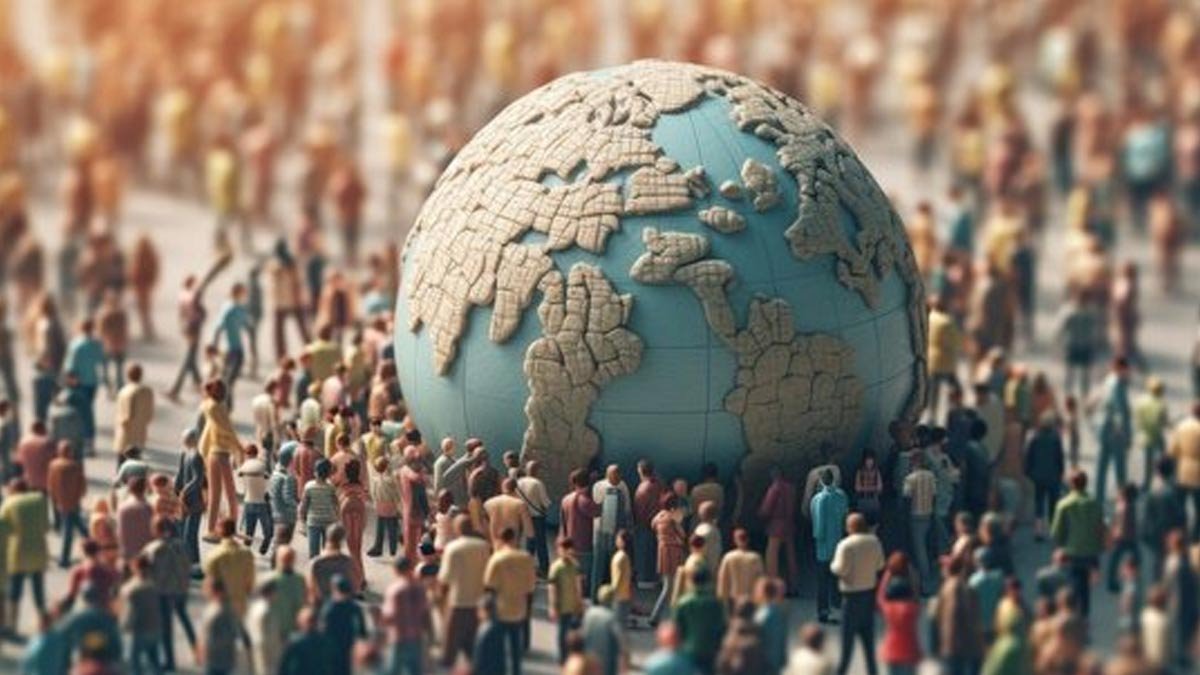Mudassir Rizwan
In the last century, the world has experienced an unprecedented surge in population, with numbers skyrocketing from 1.65 billion in 1900 to a staggering 6.14 billion by the year 2000. Today, the global population stands at approximately 8.0 billion, and projections indicate it could reach 9.7 billion by 2050 and peak at 10.4 billion by the 2080s.
The story of this rapid population growth is multi-faceted and complex. Historically, population growth was slow, with the world reaching its first billion around 1800. However, the last two centuries have witnessed a dramatic acceleration due to advancements in medicine, agriculture, and technology, which have reduced mortality rates and spurred higher birth rates. While this rapid population expansion is a testament to human ingenuity, it also comes with severe consequences that threaten global stability.
One of the most significant trends accompanying the population explosion has been the rapid urbanization of the world. As populations swelled, so did the migration of people from rural areas to cities, seeking better employment opportunities, education, and healthcare. By the end of the 20th century, more than half of the global population resided in urban areas, a sharp increase from just 30 per cent in 1950. This urbanization trend has continued into the current century, with the UN projecting that nearly 70 per cent of the world’s population will live in urban areas by 2050.
Pl, subscribe to the YouTube channel of republicpolicy.com
Urbanization has brought both opportunities and challenges. While it has driven economic growth, innovation, and improved access to essential services, it has also led to the expansion of megacities, often accompanied by overcrowding, inadequate infrastructure, and the proliferation of slums. Furthermore, the concentration of populations in urban centers exacerbates environmental pressures, contributing to air pollution, waste management issues, and increased energy consumption, all of which have far-reaching implications for both food security and climate change.
The astonishing reality of the 20th century’s population boom is that it occurred despite the massive loss of life caused by two world wars. World War I and World War II together claimed tens of millions of lives, yet the global population still increased by 4.49 billion. This underscores the sheer scale of population growth driven by advances in medicine, agriculture, and technology. Had these wars not occurred, the global population today might have been even larger, intensifying the challenges of food security and environmental sustainability.
As the global population balloons, the demand for food also increases. Agricultural practices have evolved to keep pace with the growing population, but the world’s arable land is finite, and the overexploitation of natural resources to feed billions is leading to diminishing returns. Soil degradation, deforestation, and water scarcity are some of the challenges that threaten to disrupt the balance of global food production. Food insecurity looms large, particularly for developing nations, where population growth is most pronounced. With more mouths to feed and less land to cultivate, the world could soon face severe food shortages, potentially leading to widespread hunger, social unrest, and conflict over dwindling resources.
Population growth exacerbates another pressing issue: climate change. The greater the population, the higher the demand for energy, transportation, and housing, all of which contribute to greenhouse gas emissions. The overuse of resources such as fossil fuels, forests, and water accelerates the planet’s warming, leading to more frequent and severe weather events, rising sea levels, and the loss of biodiversity. The link between population growth and climate change is undeniable. As more people inhabit the Earth, the strain on the planet’s ecosystems intensifies, making it harder to mitigate the impacts of global warming.
The global population explosion reflects human progress but also underscores the urgent need for sustainable development. Governments, international organizations, and communities must collaborate to address the challenges of food insecurity and climate change. This includes investing in renewable energy, promoting sustainable agricultural practices, and implementing policies that stabilize population growth.
The Unprecedented Global Population Growth: A Double-Edged Sword reflects on the remarkable acceleration of the world’s population from 1.65 billion in 1900 to approximately 8.0 billion today, with projections indicating a surge to 9.7 billion by 2050 and a peak at 10.4 billion by the 2080s. This growth is attributed to advancements in medicine, agriculture, and technology, leading to severe consequences such as rapid urbanization, food insecurity, and exacerbation of climate change. The article emphasizes the urgent need for sustainable development and collective efforts to address these challenges head-on.















